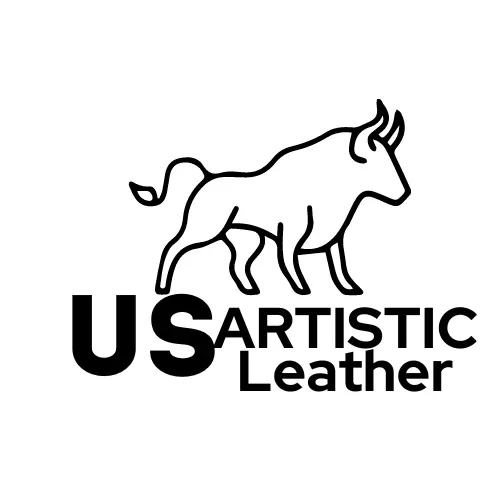
Leather jackets have long been a symbol of cool, gracing the backs of rebels and fashion icons alike. But behind that sheen lies a hidden cost – a significant environmental impact that stretches from farm to factory. This article delves into the environmental consequences of leather jacket production, explores the experiences of those affected, and offers a glimpse into the world of sustainable alternatives that are changing the fashion landscape.
The Environmental Toll of Leather
- Land Use and Deforestation: Livestock farming, a primary source of hides for leather, is a major driver of deforestation. A 2022 report by Faunalytics highlights that leather production can contribute to habitat loss and endanger biodiversity by driving demand for grazing land [1]. This destruction has cascading effects, leading to soil erosion, desertification, and the displacement of native species.
- Water Pollution: Tanning, the process of converting hides into leather, is a water-intensive and polluting endeavor. According to a European Commission-supported report, tanning just 1 kilogram of leather can consume up to 250 liters of water and generate a staggering 6.1 kilograms of solid waste [2]. These chemicals often include chromium, a carcinogen that can contaminate waterways and pose health risks to tannery workers.
- Greenhouse Gas Emissions: Livestock production is a significant contributor to greenhouse gas emissions, methane being a particularly potent culprit. A PETA article cites research indicating that animal agriculture is responsible for more greenhouse gases than all of the world’s transportation systems combined [3]. While processing hides offsets some methane emissions from decomposition, the tanning process itself adds to the overall environmental burden.
- Microplastics and Waste: Even after a leather jacket reaches the end of its lifespan, the problems persist. Leather is slow to decompose in landfills, and some synthetic alternatives made with polyurethane (PU) contribute to microplastic pollution in our oceans and waterways [4].
Related Articles
The Human Cost of Leather
The environmental impact of leather production is often intertwined with the human cost. Many tanneries, particularly in developing countries, operate under lax regulations, exposing workers to hazardous chemicals and unsafe working conditions.
A 2022 article on https://www.ecowatch.com/future-of-leather.html highlights the ethical concerns surrounding animal cruelty in the leather industry. While some argue that using hides is a way to utilize byproducts of meat production, others find the process inherently exploitative.
A Shift Towards Sustainability
Thankfully, the fashion industry is undergoing a transformation. A growing number of consumers are seeking eco-friendly alternatives, and innovative companies are rising to the challenge. Here are some promising sustainable options:
- Plant-Based Leathers: Materials like pineapple leaves, cactus leather, and mushroom mycelium are being used to create sustainable alternatives that mimic the look and feel of leather. These plant-based materials require significantly less water and land, and their production avoids the use of harmful chemicals.
- Recycled Materials: Repurposing plastic waste and other discarded materials is another avenue for sustainable leather alternatives. These recycled materials offer a way to reduce reliance on virgin resources and extend the lifespan of existing materials.
- Transparency and Responsible Sourcing: A growing movement within the leather industry emphasizes responsible sourcing practices and increased transparency throughout the supply chain. This ensures that animal welfare is considered, and environmental regulations are followed.
Real People, Real Change:
The shift towards sustainable fashion is being driven not just by industry trends, but by the voices of everyday people. Documentaries like “The True Cost” have shed light on the environmental and ethical issues surrounding traditional fashion practices, inspiring consumers to make more conscious choices.
Small businesses and independent designers are also playing a crucial role. Many are embracing sustainable materials and production methods, proving that style can coexist with environmental responsibility.
The Road Ahead
The future of leather jackets is not set in stone. By understanding the environmental impact of traditional leather production and embracing sustainable alternatives, consumers can be a driving force for positive change. As awareness grows and innovation continues, the iconic leather jacket may soon represent not just timeless style, but a commitment to a healthier planet.
Citations:
[1] Faunalytics, “The Leather Industry’s Impact On The Environment,” https://faunalytics.org/the-environmental-impact-of-leather/
[2] European Commission report (cited by Leather Jacket Master) “Behind the Hype: The Real Impact of Eco Leather on Sustainability,” https://loctote.com/blogs/company/eco-leather-vs-vegan-leather
[3] PETA, “Environmental Hazards of Leather,” https://www.peta.org/features/leather-is-killing-animals-and-our-planet/
[4] Lusso Leather, “Impact of Leather Jackets on the Environment: Face the Facts,” https://www.lussoleather.com/blogs/guide/impact-of-leather-jackets-on-the-environment

